I am trying to merge multiple columns where after one column the following column starts in a specific index. for example, as you can see in the code below, I have 15 sets of data from df20 to df90. As seen in the code, I have merge the data i and then followed by another starting from index = 1,000.
So I wanted my output to be df20 followed by df25 starting at index=1000, then followed by df30 starting at index=2000, then followed by df35 at index=3000. I wanted to see all 15 columns but I only have one column in my output.
I have tried it below, but doesn't seem to work. Please help.
dframe = [df20, df25, df30, df35, df40, df45, df50, df55, df60, df65, df70, df75, df80, df85, df90]
for i in dframe:
a = i.merge((i).set_index((i).index+1000), how='outer', left_index=True, right_index=True)
print(a)
Output:
df90_x df90_y
0 0.000757 NaN
1 0.001435 NaN
2 0.002011 NaN
3 0.002497 NaN
4 0.001723 NaN
... ... ...
10995 NaN 1.223000e-12
10996 NaN 1.305000e-12
10997 NaN 1.809000e-12
10998 NaN 2.075000e-12
10999 NaN 2.668000e-12
[11000 rows x 2 columns]
Expected Output:
df20 df25 df30
0 0.000757 0 0
1 0.001435 0 0
2 0.002011 0 0
3 0.002497 0 0
4 0.001723 0 0
... ... ... ...
1000 1.223000e-12 0
1001 1.305000e-12 0
1002 1.809000e-12 0
1003 2.668000e-12 0
... ...
2000 0.1234
2001 0.4567
2002 0.8901
2003 0.2345

